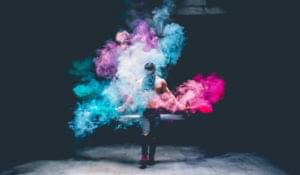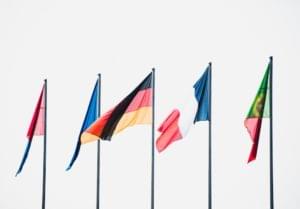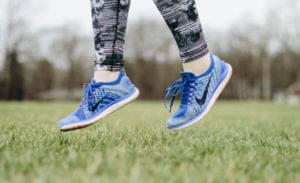Website Usability and Page Speed – Birds of a Feather
Key Takeaways
- Website usability, which includes page speed, is key to creating an engaging user experience and making a lasting impression on visitors.
- Page speed is a critical usability element that directly impacts user satisfaction levels; slower loading times lead to increased user frustration and abandonment of a website.
- Page speed also plays a significant role in SEO; faster loading pages result in improved user engagement, better indexation, and potentially higher rankings in search engine results.
- With the rise of mobile web usage, page speed and usability become even more critical as mobile users often face slow network connectivity and are more impatient.

The difference between good and great websites is the quality of their UX. In order to make a lasting impression on visitors, you must build engaging user experiences, and website usability is the single most important factor determining how a user will experience your site.
Usability is about building an easy-to-use high performance website that has been designed and developed with the single minded purpose of satisfying the needs and expectations of target users. Websites that meet the highest standards of web usability also complement the pattern of user behavior and persuade users to go through the site.
If you want to build a web presence that survives and prospers, usability is the one critical element that you need to get absolutely right. To put it simply, a website that is usable is not difficult to use and is self-explanatory. The following questions should be answered by the website in the affirmative:
- Is it accessible?
- Does it present the business’s identity and purpose with clarity and credibility?
- Is the on-site information easily reachable (the navigation perspective)?
- Does it offer useful content that can be easily digested?
In this article, the focus is on the page speed of a website, a critical usability element that improves website accessibility. It’s long been known that if a website makes a user wait forever to load, the user just moves on to some other site. It will be fair to say that the page speed is a prospective user’s first glimpse into the usability of a site. You cannot talk about website usability without mentioning page speed in the same breath.
They are birds of feather.
In a seminal work on usability engineering, Jakob Nielsen talks about the 3 main time limits that are an outcome of human perception. This work offers critical information on user’s expectations vis-à-vis the performance of a website or a web application. If your website doesn’t align itself with the perceptual abilities of humans, it will fail and fail big time.
So let’s take a closer look at page speed, usability and the important role both play in website success.
Website Users Hate Slow Loading Pages

Website users’ show improved satisfaction levels if a site loads quickly and their intolerance for a particular site begins to manifest itself after the page load speed crosses a specific time threshold. While Nielsen suggests that a page load speed beyond 15 seconds starts getting intolerable for web users, Hoxmeier and DiCesare place this limit at 12 seconds.
The key here is website loading speed impacts the satisfaction or the dissatisfaction levels of web users. People expect a super quick online user experience and if the website is unable to deliver on their expectation, they will abandon it. No longer do users wait patiently for a site to load. They have very limited time to consume information and many of them are also consuming it on the go. They no longer have the patience or the inclination to consume a page that loads slowly. They have better things to do with their time. Websites need to respect their time.
Page Speed as a subset of usability important for SEO
The quality of a website’s SEO has a bearing on its online visibility. The world of SEO has undergone some rapid evolution over the past few years, especially after the arrival of the Panda and Penguin updates. It won’t be a stretch to say that there has been a tectonic shift in SEO priorities following the release of these updates. The focus shifted from optimizing for search engine bots to optimizing for users. Search engines love sites that deliver optimum user experience rather than those that focus more on improving their rankings.
The result is that site speed optimization has become an integral SEO activity where pages that load quickly are seen to be offering a range of SEO benefits.
The first SEO benefit is of course improved user engagement that results from better usability, which is a direct outcome of improved page load speed. While ranking pages, the Google search engine algorithm takes into account user behavior data like bounce rates, time spent on page and others. If the pages of your site tend to load slowly, visitors spend less time on these pages and are more likely to abandon these pages. This can impact your rankings. On the other hand, faster page load time can lead to reduced bounce rates, and more time spent on the page. Google feels your site is delivering more value if people are spending more time on it. This can have a positive impact on site rankings.
All of Google’s ranking factors have just one goal – user satisfaction. And page load speed is a critical factor that takes the satisfaction levels of your site right where Google wants them to be.
The Second SEO benefit of faster page speed can be improved indexation and the fact that such pages facilitate efficient page crawling leading to faster and better indexation. Faster indexation is crucial to sites that have thousands of pages, usually seen in the case of ecommerce websites; in this particular case all products pages demand better indexation, to help them gain better visibility.
Website Usability, Page Load Speed and your Bottom Line
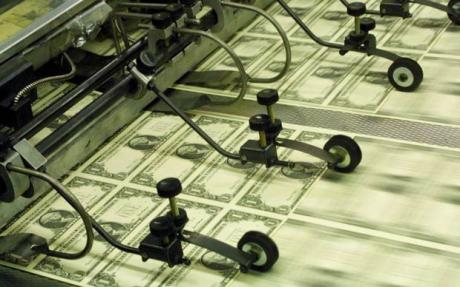
The guys at KISSmetrics have come up with an amazing infographic that links loading time with your bottom line. The loading time of your site has a direct impact on your website’s conversions. It ensures a conversion friendly site, which means page speed is also linked to your CRO strategy. If you want to increase the profitability of your site, make sure that it’s fast. If the site’s performance is not on par with the user’s expectations, say good bye to any chances of earning high ROI. In a world where people are more connected to one another than ever before, news about your site’s performance or its non-performance will spread like wild fire. Speed is therefore of the essence, in more ways than one. You ignore page speed at your own risk.
Mobile Web, Page Speed and Usability
According to a survey by Statista, a leading statistics company, mobile phones accounted for 17% web usage, till July 2013. These figures throw the spotlight on usability and page speed. Why? Mobile web users are even more impatient than your normal web user and many of them are constrained by slow network connectivity. This is a situation tailor made for websites whose usability is characterized in large part with extremely fast page speed.
With mobile content consumption growing day by day, mobile experiences will gain more traction than traditional web experiences. In this situation, page load speed and by association website usability will become critical success factors.
Conclusion
Fast loading pages are the foundation for website usability. Your visitors are your potential customers, and the first impression they have of your site’s usability is through its response time. If it loads quickly, you make sure it’s not frustrated users who make their way through your site, but users who have high expectations from it. Every decision they take on your site is a byproduct of the page load speed. There is no way you can disassociate usability from page load speed.
(Image Credits – Birds, Users, Bottom Line)
Frequently Asked Questions on Website Usability and Page Speed
What is the importance of website usability and page speed?
Website usability and page speed are crucial factors in determining the success of a website. A user-friendly website with fast loading times enhances the user experience, leading to higher user engagement, retention, and conversion rates. Slow websites can frustrate users, causing them to leave and possibly never return. Additionally, search engines like Google consider page speed as a ranking factor, meaning faster websites are more likely to rank higher in search results.
How can I improve my website’s usability?
Improving website usability involves several factors. Firstly, ensure your website has a clear, intuitive layout and navigation. Users should be able to find what they’re looking for easily. Secondly, make sure your content is readable and understandable. Use headings, subheadings, bullet points, and short paragraphs to break up text. Lastly, ensure your website is accessible to all users, including those with disabilities. This can involve using alt text for images, ensuring sufficient color contrast, and making sure your website is navigable via keyboard.
How can I improve my website’s page speed?
There are several strategies to improve page speed. These include optimizing images, enabling compression, reducing redirects, removing render-blocking JavaScript, leveraging browser caching, and improving server response time. Tools like Google’s PageSpeed Insights can help identify areas for improvement.
What is the role of mobile optimization in website usability and page speed?
With the increasing use of mobile devices to access the internet, mobile optimization has become crucial. A mobile-optimized website not only improves usability for mobile users but also enhances page speed on mobile devices. This can involve responsive design, optimizing images for mobile, and implementing mobile-friendly navigation.
How does website usability and page speed impact SEO?
Website usability and page speed are significant factors in search engine optimization (SEO). A user-friendly, fast-loading website is more likely to engage users, reducing bounce rates and increasing time spent on the site. These user engagement metrics are considered by search engines when ranking websites. Additionally, Google explicitly uses page speed as a ranking factor.
What are some common website usability mistakes to avoid?
Common website usability mistakes include confusing navigation, poor readability, lack of mobile optimization, slow load times, and lack of accessibility for users with disabilities. Avoiding these mistakes can significantly improve the user experience on your website.
What are some tools to test website usability and page speed?
Several tools can help test website usability and page speed. These include Google’s PageSpeed Insights and Lighthouse for page speed, and usability testing tools like UsabilityHub, UserTesting, and Crazy Egg.
How often should I test my website’s usability and page speed?
Regular testing is crucial to maintaining and improving website usability and page speed. It’s recommended to conduct usability testing whenever you make significant changes to your website. For page speed, regular testing can help identify any new issues that may arise over time.
How does website usability and page speed affect conversion rates?
A user-friendly, fast-loading website can significantly improve conversion rates. Users are more likely to engage with and make purchases from websites that are easy to use and load quickly. Conversely, poor usability and slow load times can frustrate users and deter them from converting.
What is the relationship between website usability, page speed, and user satisfaction?
Website usability and page speed directly impact user satisfaction. A user-friendly, fast-loading website provides a positive user experience, leading to higher user satisfaction. On the other hand, a difficult-to-use, slow website can frustrate users, leading to lower satisfaction levels.
Pratik Dholakiya is the Co-Founder & VP of Marketing of an internet marketing company, E2M Solutions & a creative design agency, OnlyDesign. He’s passionate about startup marketing, entrepreneurship & all things inbound marketing. Catch him on Twitter to discuss any of these topics.
Published in
·Canvas & SVG·Design·Design & UX·HTML·HTML & CSS·Illustration·UI Design·September 16, 2015
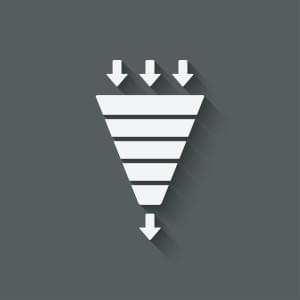
Published in
·APIs·Design Patterns·Libraries·Patterns & Practices·Performance·Performance & Scaling·PHP·Web Services·September 12, 2016

